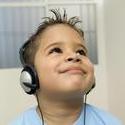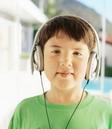|
CONDITION |
0 |
1 |
2 |
3 |
|
1. History of middle ear infections before three years
of
age. |
|
|
|
|
|
2. History of middle ear infections . |
|
|
|
|
|
3. History of ear tube operations. |
|
|
|
|
|
4. Does not pay attention to instruction or teaching 50%
or more of the time. |
|
|
|
|
|
5. Has difficulty following spoken directions. |
|
|
|
|
|
6. Often necessary to repeat instructions. |
|
|
|
|
|
7. Does not learn well through auditory channel. |
|
|
|
|
|
8. Slow processing of auditory input. |
|
|
|
|
|
9. Cannot always relate what is heard to what is seen. |
|
|
|
|
|
10 Cannot attend to purely auditory input for more than
a few seconds. |
|
|
|
|
|
11. Frequently misunderstands what is said. |
|
|
|
|
|
12. Often asks for repetition of what was said /says
“huh?” & “what?” |
|
|
|
|
|
13. Forgets what was said in a few minutes. |
|
|
|
|
|
14. Has a short attention span. |
|
|
|
|
|
15. Daydreams, attention drifts. |
|
|
|
|
|
16. Easily distracted by sounds. |
|
|
|
|
|
17. Ability to work deteriorates in groups or crowds. |
|
|
|
|
|
18. Experiences problems with sound discrimination. |
|
|
|
|
|
19. Has difficulty with phonics. |
|
|
|
|
|
20. Has problem repeating or remembering sequences. |
|
|
|
|
|
21. Is bothered by sounds/covers ears or has a painful
discomfort reaction. |
|
|
|
|
|
22. Notices sounds before others do. |
|
|
|
|
|
23. Has “startle” reaction to sounds that don’t bother
anyone else. |
|
|
|
|
|
24. Needs loud music to be able to concentrate on
homework. |
|
|
|
|
|
25. Seeks “quiet time”. |
|
|
|
|
|
26. Does not comprehend many words/concepts for their age. |
|
|
|
|
|
27. Has a language problem (grammar, vocabulary, etc.) |
|
|
|
|
|
28. Has had/now has an articulation problem (speech). |
|
|
|
|
|
29.
Has problems relating a story or event. |
|
|
|
|
|
30.
Reading and/or spelling problems. |
|
|
|
|
|
31.
Makes more mistakes in the beginning of
tasks than at the end. |
|
|
|
|
|
32.
Makes more mistakes at the end of a task
than at the beginning. |
|
|
|
|
|
33.
Disruptive, annoying behaviour(s). |
|
|
|
|
|
34.
Withdraws socially. |
|
|
|
|
|
35.
Inconsistencies of performance and of
errors. |
|
|
|
|
|
36.
Is underachieving scholastically. |
|
|
|
|
|
TOTAL SCORE: Total up the numbers per column and write
in the boxes below each column.
The higher the scores,
the greater the need for AIT services. |
|
|
|
|
|
Scoring Key:
0 – 36 = no concern
37 – 72: mild problem 72
and more: definite auditory problem
THIS
AUDITORY PROBLEMS CHECKLIST WAS COMPILED BY STAFF OF THE
IELP AS PART OF A RESEARCH PROJECT INTO AUDITORY
PROCESSING PROBLEMS IN CHILDREN AND ADULTS, WITH
REFERENCE TO THE FISCHER’S APC, AND THE WORKS OF A.J.
KATZ. |






